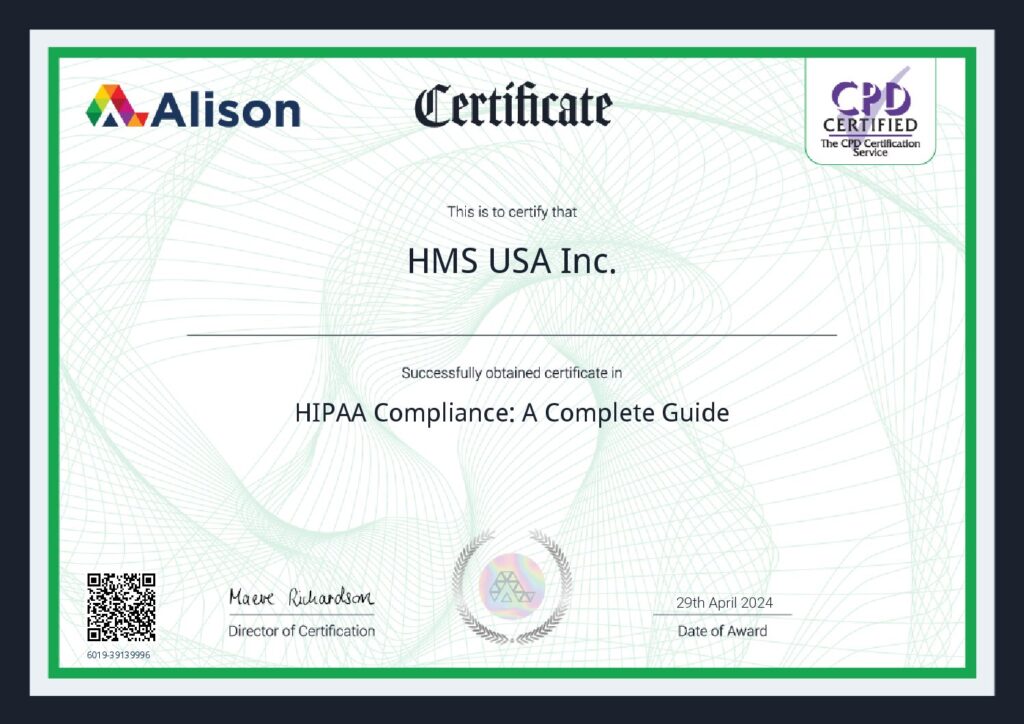Accurate ICD-10 coding plays a critical role in healthcare compliance, proper reimbursement, and clean claim submissions. For conditions like acute pyelonephritis, using the correct ICD-10 code ensures correct clinical documentation and prevents costly claim denials. As we move into the 2026 ICD-10 updates, providers, coders, and billing teams must understand the changes that impact kidney infection coding.
Acute pyelonephritis is a sudden and serious bacterial infection affecting the kidneys. Without immediate diagnosis and treatment, this condition may lead to life-threatening complications such as sepsis, kidney scarring, or long-term renal impairment. That’s why documentation, clarity, and exact ICD-10 coding matter more than ever.
This comprehensive guide, created by HMS USA Inc., the nation’s trusted medical billing and coding company, breaks down the 2026 ICD-10 code for acute pyelonephritis, coding rules, documentation requirements, common mistakes, and tips to stay compliant.
What Is Acute Pyelonephritis?
Acute pyelonephritis is a severe bacterial kidney infection that typically begins as a urinary tract infection (UTI) and progresses upward into the kidney. Symptoms may include:
- High fever
- Flank or back pain
- Painful urination
- Chills
- Nausea and vomiting
- Frequent or urgent urination
It differs from:
Chronic pyelonephritis
A long-term kidney infection that leads to progressive kidney damage.
Recurrent pyelonephritis
Multiple acute infections occur over time, often due to underlying urinary tract abnormalities.
Accurate ICD-10 coding helps distinguish these clinical variations.
ICD-10 Code for Acute Pyelonephritis (2026 Update)
Primary Code: N10 — Acute Pyelonephritis
The ICD-10 code for acute pyelonephritis in 2026 remains N10. This is the standard code used when a patient is diagnosed with an acute kidney infection involving inflammation of the kidney and renal pelvis.
Documentation Must Include:
- Clear diagnosis of acute pyelonephritis
- Presence of fever, flank pain, positive urine culture, etc.
- Link to a UTI if applicable
- Lab/imaging results (urinalysis, CT scan, urine culture)
- Identification of the organism (E. coli, Klebsiella, etc.)
Using search terms such as icd 10 cm code for acute pyelonephritis or acute pyelonephritis icd 10 code helps coding teams ensure accuracy.
ICD-10 Code for Acute Pyelonephritis, Unspecified
When the diagnosis is confirmed, but documentation lacks details (such as the organism or cause), coders assign the ICD-10 code for acute pyelonephritis unspecified, still N10.
When to Use Unspecified Codes:
- Provider documents “acute pyelonephritis” but does not identify the organism
- Imaging/lab details are missing
- Cause (e.g., obstruction, reflux) is not documented
Why It Matters:
Using unspecified codes too often raises red flags in audits and payer reviews. It may also lead to:
- Claim delays
- Documentation queries
- Reduced reimbursement
Clear documentation helps avoid these issues.
ICD-10 Code for Kidney Infection: Understanding the Difference
A kidney infection is a broad term, while acute pyelonephritis is a specific diagnosis involving deeper kidney inflammation.
Use the ICD-10 code for kidney infection when:
- Infection is mild
- Pyelonephritis is not confirmed
- Imaging does not show renal involvement
Examples:
Example 1: Acute Pyelonephritis
“Fever + flank pain + positive culture; diagnosed as acute pyelonephritis.” → Code N10
Example 2: Kidney Infection (Non-specific)
“Patient diagnosed with a kidney infection; imaging does not show pyelonephritis.” → Use the general kidney infection code
Example 3: Specific Cause
“Acute pyelonephritis due to a kidney stone.” → Code N10 + add cause-specific code
Chronic Pyelonephritis and Its ICD-10 Code
ICD-10 Code: N11.1 — Chronic Pyelonephritis
Chronic pyelonephritis involves long-term kidney inflammation caused by repeated or untreated infections.
Required Documentation:
- Duration of symptoms
- History of recurrent UTIs
- Evidence of kidney scarring
- Any urinary abnormalities
Accurate documentation helps coders differentiate acute vs. chronic conditions, preventing miscoding and claim denials.
ICD-10 Code for Acute Pyelonephritis Due to E. coli
E. coli is the most common bacterium causing acute pyelonephritis.
Coding Rule:
- N10 — Acute pyelonephritis
- Add organism-specific code, e.g.,
- B96.20 — Unspecified E. coli
- B96.21 — E. coli (ESBL-producing)
- B96.20 — Unspecified E. coli
Why it’s Important in 2026:
The updated ICD-10 guidelines require more precise pathogen reporting, improving:
- Antibiotic stewardship
- Infection tracking
- Revenue cycle accuracy
Common ICD-10 Coding Mistakes for Pyelonephritis (And How to Avoid Them)
1. Using Vague or Unspecified Codes
Occurs when documentation is incomplete. Leads to:
- Claim delays
- Claim Denials
- Audit risks

2. Missing the Causative Organism
If E. coli is documented but not coded → incomplete claim.
3. Confusing Acute vs. Chronic Codes
N10 ≠ N11.1
Always verify duration and clinical findings.
4. Ignoring Complications
Obstruction, sepsis, stones, or reflux must be coded separately.
Tips to Avoid Errors
- Maintain complete documentation
- Use coder checklists
- Conduct routine audits
- Communicate with providers regularly
Why Accurate ICD-10 Coding Matters for Acute Pyelonephritis
Correct coding helps healthcare organizations:
- Ensure proper reimbursement
- Maintain compliance
- Avoid RAC and payer audits
- Improve patient records
- Reduce claim denials
CDI Programs Improve Accuracy By:
- Clarifying provider notes
- Ensuring codes match documentation
- Preventing mismatched claims
What’s New in the 2026 ICD-10 Updates
The 2026 ICD-10 changes add:
- Clearer definitions
- More detailed organism codes
- Better distinction between acute, chronic, and recurrent cases
- Pathogen-specific coding improvements
- Updated documentation requirements
Healthcare teams should:
- Update EHR templates
- Train staff on new rules
- Review code crosswalks
- Improve documentation workflows
Conclusion
The 2026 ICD-10 code for acute pyelonephritis brings clearer guidelines, helping healthcare providers document and bill kidney infections more accurately. Whether coding acute, chronic, unspecified, or E. coli-related pyelonephritis, precise documentation is essential for clean claims and compliance.
Keeping up with evolving ICD-10 rules reduces coding errors, protects revenue, and supports better patient care.
Need Help with ICD-10 Coding or Billing?
HMS USA Inc. provides reliable, accurate, and fully compliant medical billing and coding services.
✔ Reduce denials
✔ Improve reimbursement
✔ Stay compliant with ICD-10 2026 updates
✔ Get expert support from certified coders
Contact HMS USA Inc. today for expert ICD-10 coding and billing assistance!
FAQs
What is the ICD-10 code for acute pyelonephritis?
The ICD-10 code for acute pyelonephritis is N10, used for acute kidney infections.
Is there a separate ICD-10 code for acute pyelonephritis, unspecified?
Yes, N10 is used when documentation lacks details such as cause or organism.
What ICD-10 code is used for a kidney infection?
Kidney infections are typically coded under N10, unless documentation indicates a different condition.
Is there a different ICD-10 code for chronic pyelonephritis?
Yes. Chronic pyelonephritis is coded using N11, with subclasses for cause and severity.
How do you code acute pyelonephritis caused by E. coli?
Use N10 plus an organism-specific code, such as B96.20 for E. coli.








